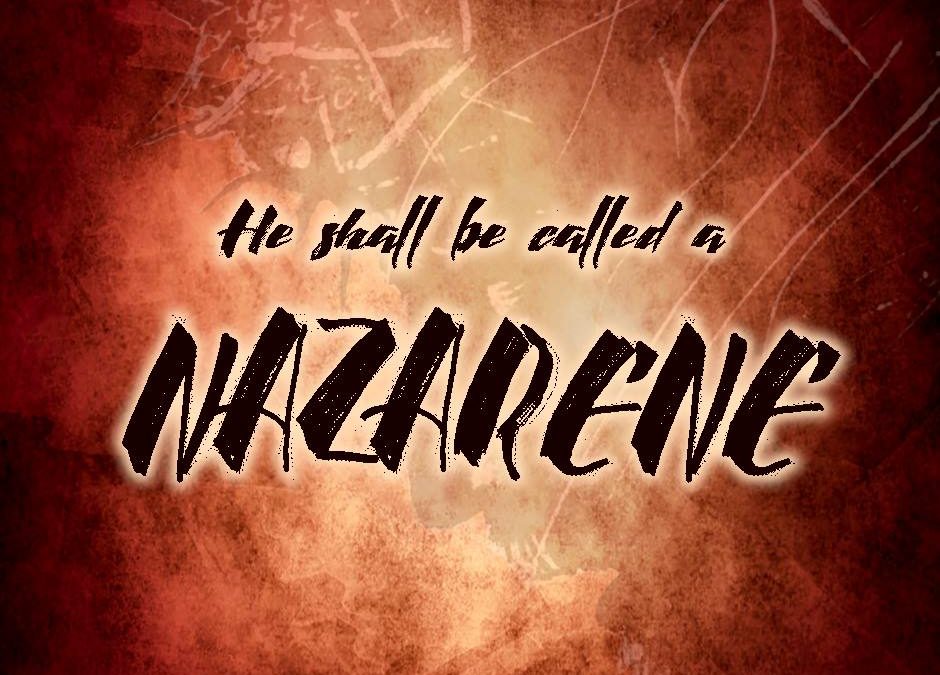Hebrews 10:5 is one of the worst examples of New Testament Scripture twisting

Hebrews 10:5 is one of the worst examples of New Testament Scripture-twisting. The writer quotes from Psalm 40, where the psalmist says, “You have opened my ears,” but he applies it to Jesus and changes the words to read, “A body you have prepared for me.” Could you imagine anything more dishonest?
Actually, the writer to the Hebrews was simply quoting from the Septuagint—the Greek version of the Scriptures made by and for Greek-speaking Jews—as he generally does throughout his book. In this particular case, the exact meaning of the original Hebrew is somewhat unclear, and the Septuagint offered an interpretive rendering. So, neither the Septuagint nor Hebrews were in the least bit dishonest or misleading. Also, it’s interesting that Hebrews does not major on the part of the verse that was supposedly changed but puts the emphasis on other parts of the quote.
Anti-missionary Tovia Singer writes, “Notice how King David’s original words, ‘but my ears You have opened’ have disappeared entirely in the Hebrews quote. Instead, this New Testament author replaced this expunged clause with the words ‘But a body you have prepared for Me.’ This is a startling alteration of the Jewish scriptures.”85
Is there any truth to this charge? Aside from the fact that such a practice would be totally self-defeating—as I have stressed repeatedly, first-century Jewish readers would have been quick to spot the creation of a nonexistent verse or the wholesale changing of an existing text—it would make no sense: Why would the author of Hebrews completely change the text of a verse from a favorite section of the Bible (viz., the Psalms), knowing full-well that at least some of his readers would know the verse in Hebrew? It would be like a political leader speaking today to an audience of educated Americans and saying to them, “As Patrick Henry said, ‘Give me poverty or give me birth!’ ” Who would he be fooling with this? And what would his point be? There would be none.
This is underscored when we remember that the author of Hebrews was writing to Jewish believers and was not trying to convince them of something. In other words, he was just opening up the Scriptures to them, giving them insight and instruction to build their faith. All the more then is it absolutely preposterous to think that he would “erase” the original wording and replace it with his own.
Why then does the citation of Psalm 40:6[7] in Hebrews 10:5 read differently than most translations of the Hebrew text? The answer is simple: The Hebrew expression there is somewhat obscure, and the Septuagint (LXX), which was quoted in Hebrews, offered an interpretative rendering of the text. That’s it! No Scripture-twisting, no manipulating of the text, no sleight of hand.
Just a simple quotation from the Greek Bible used by Greek-speaking Jews in that day, consistent with the pattern of the author of Hebrews, who quotes from the LXX throughout his book.86 And this striking rendition of the original text fit well into the general theme of Hebrews 10, so it was especially suitable to quote it here. This would be just like a preacher today looking for a specific translation of a particular verse that would best suit his sermon needs.
If the translation was reliable and really brought out his point well, he would probably use it. All of us who regularly quote the Scriptures, teach from the Scriptures, or preach from the Scriptures have done similar things, and there is nothing wrong or dishonest about it, provided that the translation is faithful and reliable.
Anti-missionaries, however, would say that in the case under discussion here, the translation was not faithful and reliable. According to Rabbi Bentzion Kravitz of Jews for Judaism, it is an open-and-shut case:
Hebrews 10:5 of the New Testament, when quoting Psalm 40, claims that G-d replaced animal sacrifices with the death of the Messiah, by stating that, “sacrifices and offerings You have not desired, but a body You have prepared for Me.” However, the original quote from Psalm 40:6 does not say this; it says, “sacrifices and meal offerings You have not desired; My ears You have opened.” This refers to G-d’s desire that we listen to Him, as it says, “Behold!—to obey is better than sacrifice.” (1 Sam. 15:22)87
What Rabbi Kravitz fails to note is that the Hebrew text in Psalm 40:6 (v. 7 in Hebrew texts) is not totally clear, containing an interesting phrase that can be roughly translated, “you have dug out ears for me.” What does this actually mean and how should it be properly translated? Consider for a moment the renderings of these contemporary Jewish translations.
The Orthodox Jewish Stone Edition translates this as, “You opened ears for me,” which makes good sense in English but fails to explain why such an unusual Hebrew idiom would be used. (The Christian NIV tentatively renders, “but my ears you have pierced,” reminding us that the verb really does not mean “open.”) The NJPSV renders with, “You gave me to understand… ,” noting, “Meaning of Heb. uncertain.” That’s quite a jump from a literal translation! Similarly, the commentary of Martin S. Rozenberg and Bernard M. Zlotowitz translates, “You have made me aware.”
(What would an anti-missionary say of these translations? Where is the dishonest motivation here?) Rozenberg and Zlotowitz then explain, “lit[erally] ‘Ears you have dug for me,’ i.e., He unstopped the ears so he could hear clearly God’s declaration and obey it. To just listen and not act is like having the ears stopped.”88 (This is similar to the interpretation of Rashi and Metsudat David; cf. also Ibn Ezra.)
Again, however, we need to ask, Why is the Hebrew verb in question (k-r-h, normally “dig”; cf. Exod. 21:33, and see Midrash Tehillim 40:4) used in the context of opening up or unstopping ears? Commentators and lexicographers have no easy answer to this question, since the usage is quite unique.89
In any case, regardless of one’s specific interpretation of the Hebrew phrase, the point I’m making is obvious: The text is difficult, both Jewish and Christian translators have struggled to bring out its meaning, and, just as some modern Jewish versions paraphrase the text in an attempt to explain it, so also the oldest Jewish version, the Septuagint, paraphrased it in an attempt to explain it, translating with “a body you have prepared for me.”90
And it was this translation—which I remind you again was the oldest and most widely used Jewish translation in the ancient world—that the author of Hebrews quoted, nothing more, nothing less.91 Note also that the emphasis in the next verses in Hebrews 10:8–9 is put on the words from Psalm 40 concerning which there is no dispute:
First he said, “Sacrifices and offerings, burnt offerings and sin offerings you did not desire, nor were you pleased with them” (although the law required them to be made). Then he said, “Here I am, I have come to do your will.” He sets aside the first to establish the second.
It is only in verse 10 that reference is made to Yeshua’s “body,” but not even as part of the previous quote. That’s not where the emphasis was being placed.
The verdict of Franz Delitzsch, the highly respected Old Testament, Semitic, and Rabbinic scholar is sober and sound. He stated that it is “impossible that the writer of our epistle should have himself accommodated the translation of the original to the facts of the New Testament history; such alterations and accommodations of the received [Hebrew] text, or its Septuagint translation, being unknown to writers of the New Testament.”92 Anti-missionaries may accuse the New Testament writers of such practices, imputing all kinds of deceitful and devious motivations to them, but biblical scholars know better.
Earlier, we quoted the words of Abraham Ibn Ezra, one of Judaism’s most revered biblical commentators, to the effect that, “The prophets do not preserve the exact wording when they repeat something. They only preserve its substance. For that is what is important …”93 That is exactly what the writer to the Hebrews did here and in doing so, was in good Jewish company, in particular, with the ancient Jewish translators, paraphrasers, and teachers of Scriptures—such as those behind the LXX and the Targums.94
85 Rabbi Tovia Singer, “Outreach Judaism Responds to Jews for Jesus,” Outreach Judaism, http://www.outreachjudaism.org/response.html#rfn6.
86 As Snow points out in Zeal for God, 74, “Had they quoted literally from the Hebrew Old Testament, but translated it into Greek, what might have happened when those they evangelized checked out their claims for Jesus (as the Bereans did)? As [Gleason] Archer remarks: ‘The readers would have noticed the discrepancies at once—minor though they may have been—and would with one voice have objected, “But that isn’t the way I read it in my Bible!” ’ ” The Archer citation is from Gleason L. Archer, Encyclopedia of Bible Difficulties (Grand Rapids: Zondervan, 1982), 307–8.
87 Bentzion Kravitz, “ ‘Hebrew Christians’: Biblical Paradox or Religious Reality,” in The Jewish Response to Missionaries, 4th ed. (Los Angeles: Jews for Judaism, 2001), http://www.jewsforjudaism.org/web/handbook/s_hebrew_christian.html.
88 Martin S. Rozenberg and Bernard M. Zlotowitz, The Book of Psalms: A New Translation and Commentary (Northvale, NJ: Aronson, 1999), 244.
89 See also Midrash Tehilim 40:4 (k-r-h is always an expression of digging, as in Exod 21:33); 116:2 (speaking of God’s ears being keruyot), followed in Gevurot Yhwh 294:64, citing Yalkut Shimoni = Midr. Teh. 116:2, and then explaining the text.
90 Many scholars believe that the Septuagint followed the principle here of metonymy or, more precisely, pars pro toto, meaning, “the part for the whole.” In other words, the Septuagint understood the Hebrew text to mean that God prepared not only (hearing?) ears, but a whole (obedient?) body, for him. (Note that the Hebrew does not say that God dug out his ears but rather that God dug out ears for him—“you dug out ears for me”).
Or, as explained by Franz Delitzsch, since the Hebrew phrase meant, “given me the sense and faculty of obedience to Thy recognised will,” this “notion of an inborn capacity of recognising and obeying the divine will is expanded into that of a body given and prepared for self-surrender to that will.” Franz Delitzsch, Commentary on the Epistle to the Hebrews, Vol. 2, trans. Thomas L. Kingsbury (repr., Minneapolis: Klock & Klock, 1978), 151, 153. Cf. also the interpretation of Malbim.
91 For discussion of some variants in the manuscripts of the Septuagint here, cf. William L. Lane, Hebrews 9–13, Word Biblical Commentary (Dallas: Word, 1991), 255, note m.
92 Delitzsch, Commentary on the Epistle to the Hebrews, Vol. 2, 153.
93 See above, n. 26.
94 For the Messianic interpretation of Psalm 40, Psalm 100 cf. vol. 3, 4.27. According to professor Ashley Crane, the LXX is far more interpretive than some scholars have recognized, for the most part, presuming that the readers also understood the Hebrew. See Crane, “Ezekiel 36–39: The Restoration of Israel in Early Jewish Interpretation.”
Brown, M. L. (2007). Answering Jewish objections to Jesus, Volume 4: New Testament objections. (37). Grand Rapids, Mich.; Baker Books.
![Born to a virgin? just one of several pagan myths [Answered] 7 Born to a virgin? just one of several pagan myths [Answered]](https://difa3iat.com/en/wp-content/uploads/2023/07/pwKhu-e1688385358129.jpg)


![The New Testament is full of historical inaccuracies [Answered] 10 The New Testament is full of historical inaccuracies [Answered]](https://difa3iat.com/en/wp-content/uploads/2023/06/hJUQx-e1687857393895.jpg)